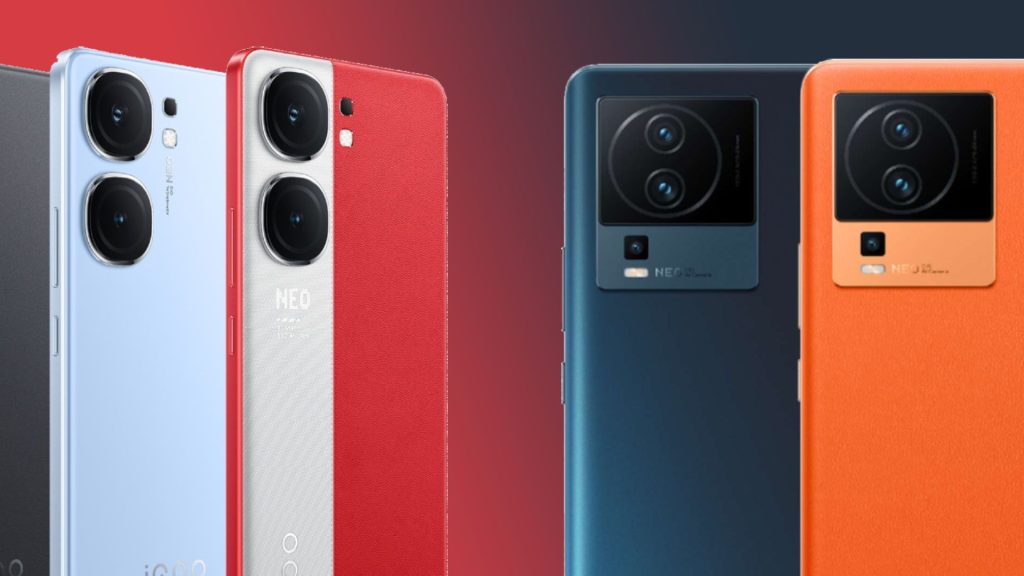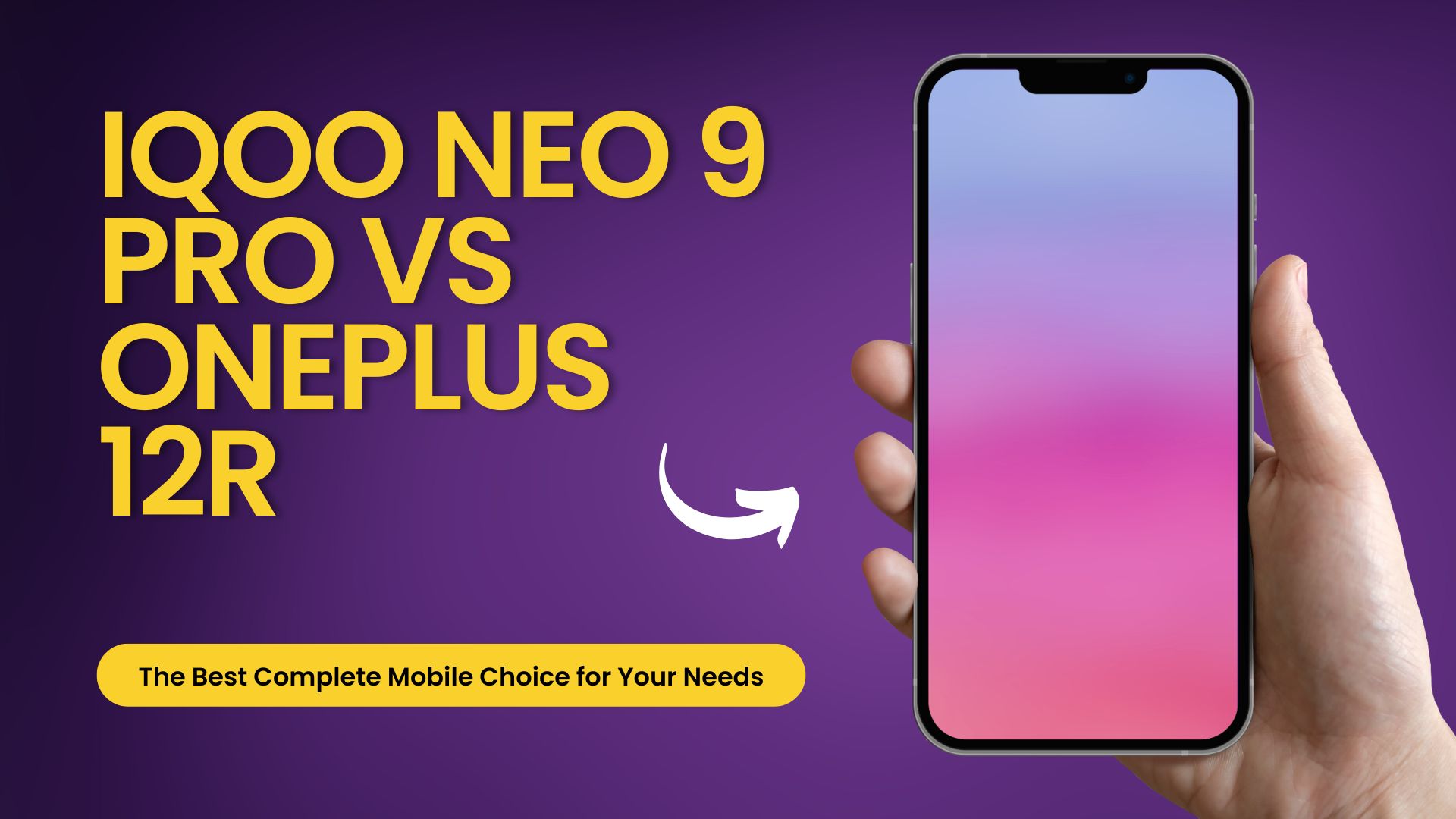iQOO Neo 9 Pro vs OnePlus 12R: Which One to buy?
I have both the OnePlus 12R and the iQoo Neo 9 Pro with me, and it seems like they are the perfect match for each other. Let us compare them and find out which one is better for you.
Both phones come with a charger inside the box, so they both score points. OnePlus offers two colors for the 12R, and Neo 9 Pro has two editions too. One with a vegan leather back and the other with a glass back. OnePlus looks very premium with its glass back and curved display, while iQoo stands out because of its bold, red and white Coca-Cola design.
When it comes to build quality, the 12R has a metal frame with Gorilla Glass Victus 2 on the front and Gorilla Glass 5 at the back, while Neo 9 Pro’s frame is plastic and the display is covered by quick sensation. Also, the 12R is IP64 rated while the Neo 9 Pro is IP54. Lastly, the dimensions of both phones are almost the same, but the Neo 9 Pro is slightly thinner and lighter compared to 12R, so it feels more comfortable in hand. Although I personally love iQOO’s bold design, when it comes to the overall build quality and design, I’ll give this point to OnePlus.
Both phones feature a 6.78-inch AMOLED 1.5K LTPO panel. While iQOO has an edge here over the refresh rate, OnePlus leads with the peak brightness numbers and the glass protection. Both displays are bright and sharp to use, be it indoors or outdoors, and come with HDR in Netflix. But there’s one interesting thing that I found with brightness. IQOO is relatively brighter than OnePlus in certain scenarios and when checked with the lux meter, iQOO can reach the advertised 3000 nits in HDR, almost, while the 12R reaches only 1500 nits, which is weird. When it comes to movie watching experience, Neo 9 Pro stereo speakers lag behind 12R. Lastly, the in-display fingerprint scanner in the 12R is placed slightly higher which is more convenient. The display is pretty evenly matched, so I’ll give points to both here.

Both phones use last year’s flagship Snapdragon 8 Gen 2, but iQOO has an advantage here with UFS 4.0 storage while 12R comes with UFS 3.1. Yes, OnePlus confirmed that their 256GB version is UFS 3.1 only instead of UFS 4.0 which they falsely advertised. Now, it does make a difference in benchmarks as you can see here. iQOO scores higher in N to 2 or Geekbench. I also tested CPU throttling and the phone doesn’t throttle a lot, but the temperature is pretty high on the back. When it comes to the 3D Mark GPU test, OnePlus takes the lead with both scores and stability. But those scores don’t affect the gaming experience at all. The phone easily handles BGMI at 90 FPS and COD Mobile at 120 FPS. I also played Genshin for an hour and still, the phone didn’t go above 40 degrees. It’s not just raw performance, iQoo has more software features like the Game Super Resolution, 4D Vibration, and Game Frame Interpolation, making the gameplay much better. Due to the storage difference, these games also load much faster on the Neo 9 Pro. So for raw performance, the point goes to iQOO.
These are the camera specifications of both phones. iQOO has an edge here in the main camera lens, and it shows in the pictures taken. The photos come out with better details in the daylight, and even the skin tones are excellent. When compared with the 12R, iQOO pictures just look better, and the HDR is better too. The same goes for night pictures, there is more detail, and HDR is on point in the iQOO, but it does have the tendency to make the sky blueish. Coming to photos, both took good pictures, and the bokeh effect is pretty decent. The ultra-wide sensors on both phones are pretty much the same and lack details as both are just 8MP sensors. On the front camera, iQoo shots just look good with more details, but colors look good on the 12R. Moving on to videos, both phones can do 4K 60 at the rear, and the iQoo even supports 8K 30, but the video performance seems to be subpar on the Neo 9 Pro as there’s blooming effect and even focus hunting problems, but I hope that it can be fixed with software updates. The front camera is limited to 1080p 30, and videos look decent on both. Overall, I’d choose iQOO Neo 9 Pro cameras as it performs consistently across all scenarios, so the point goes to iQOO.
iQOO is leading for now, but it’s going to get great competition from here on. Software is going to play a major role in the decision-making for a lot of users. Both phones come with Android 14 and will get three OS updates, but the big deal is the Android skins they run on. While Oxygen OS comes with a lot of useful fun.

Leave a Reply